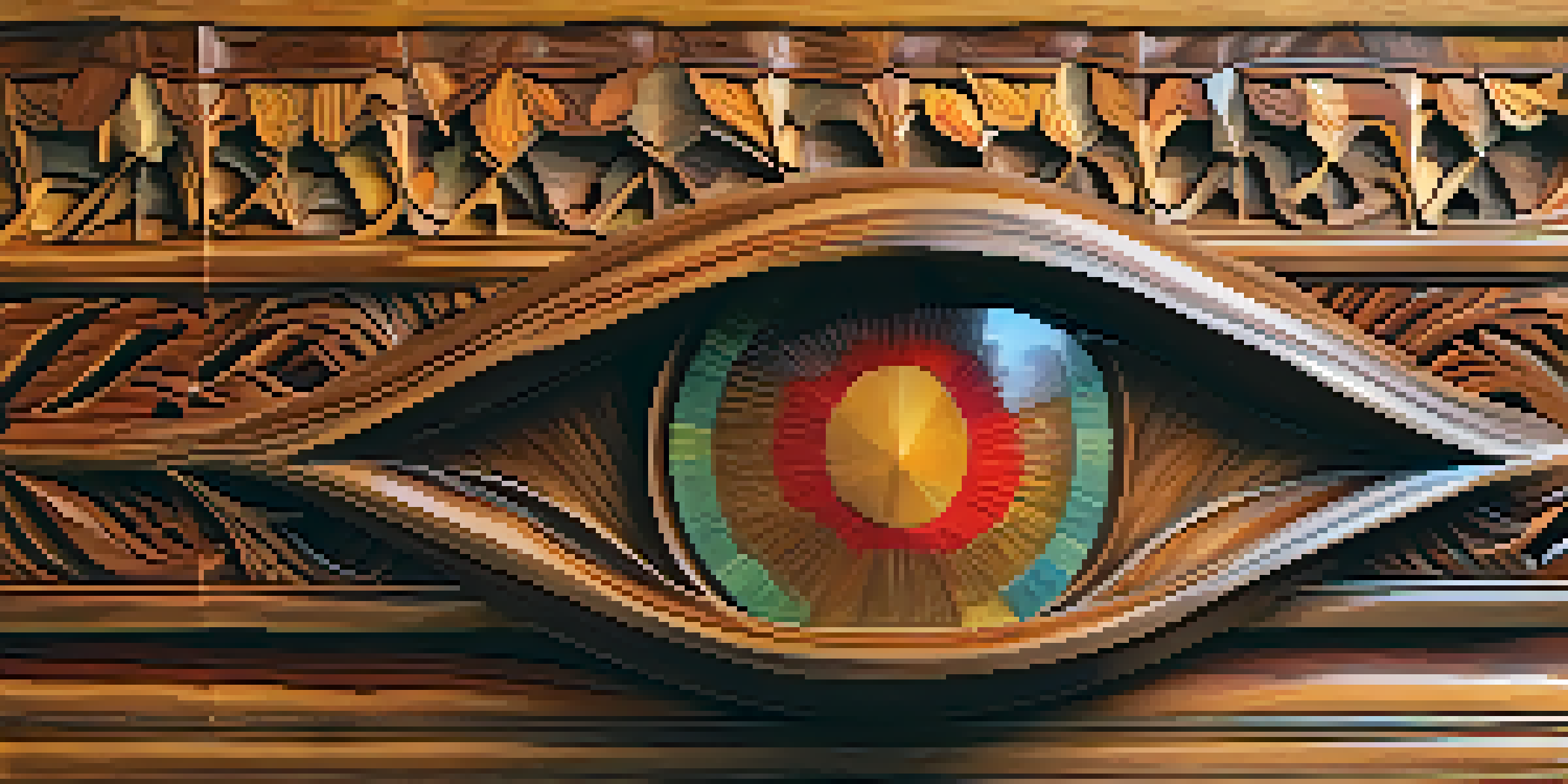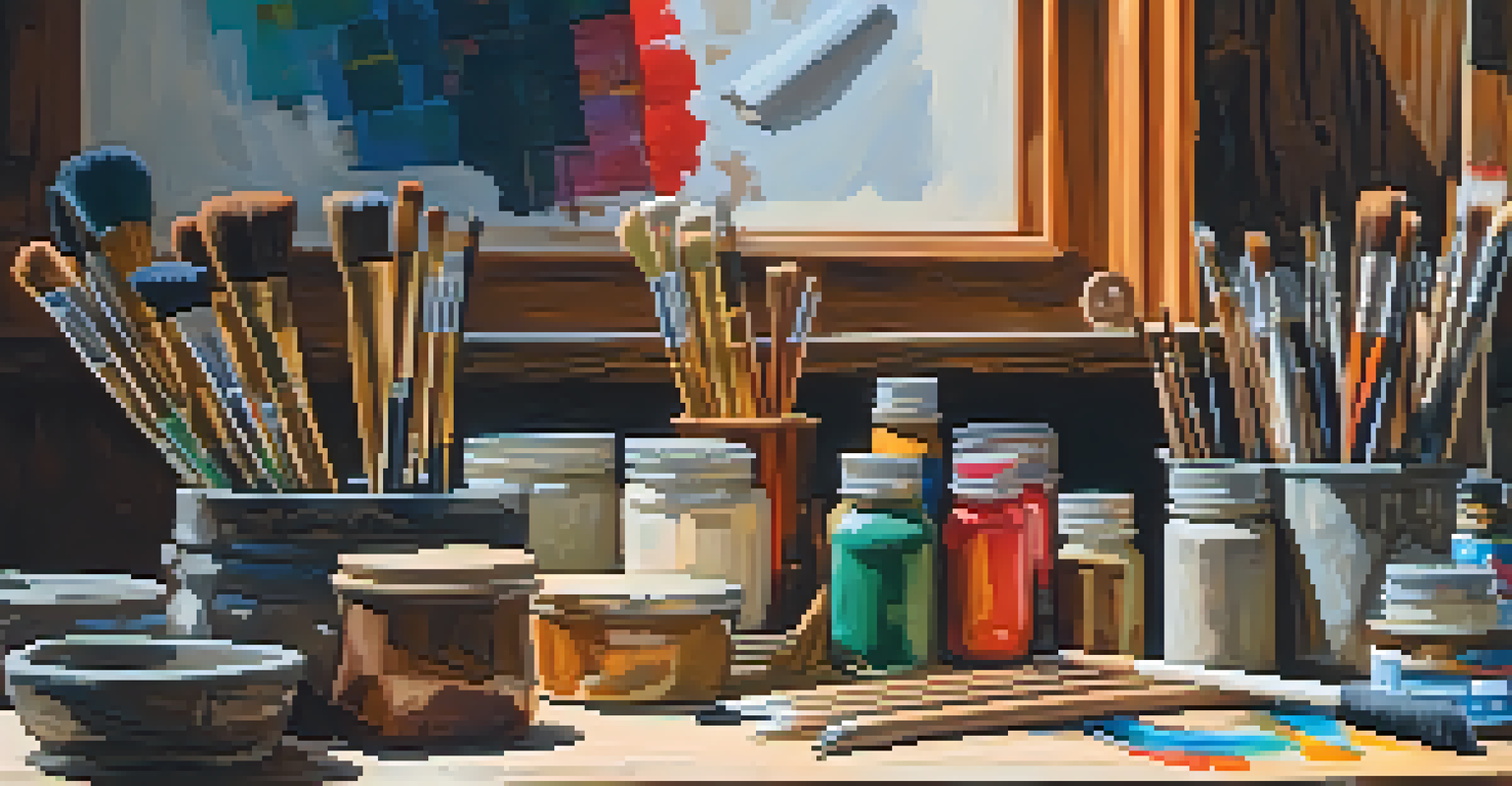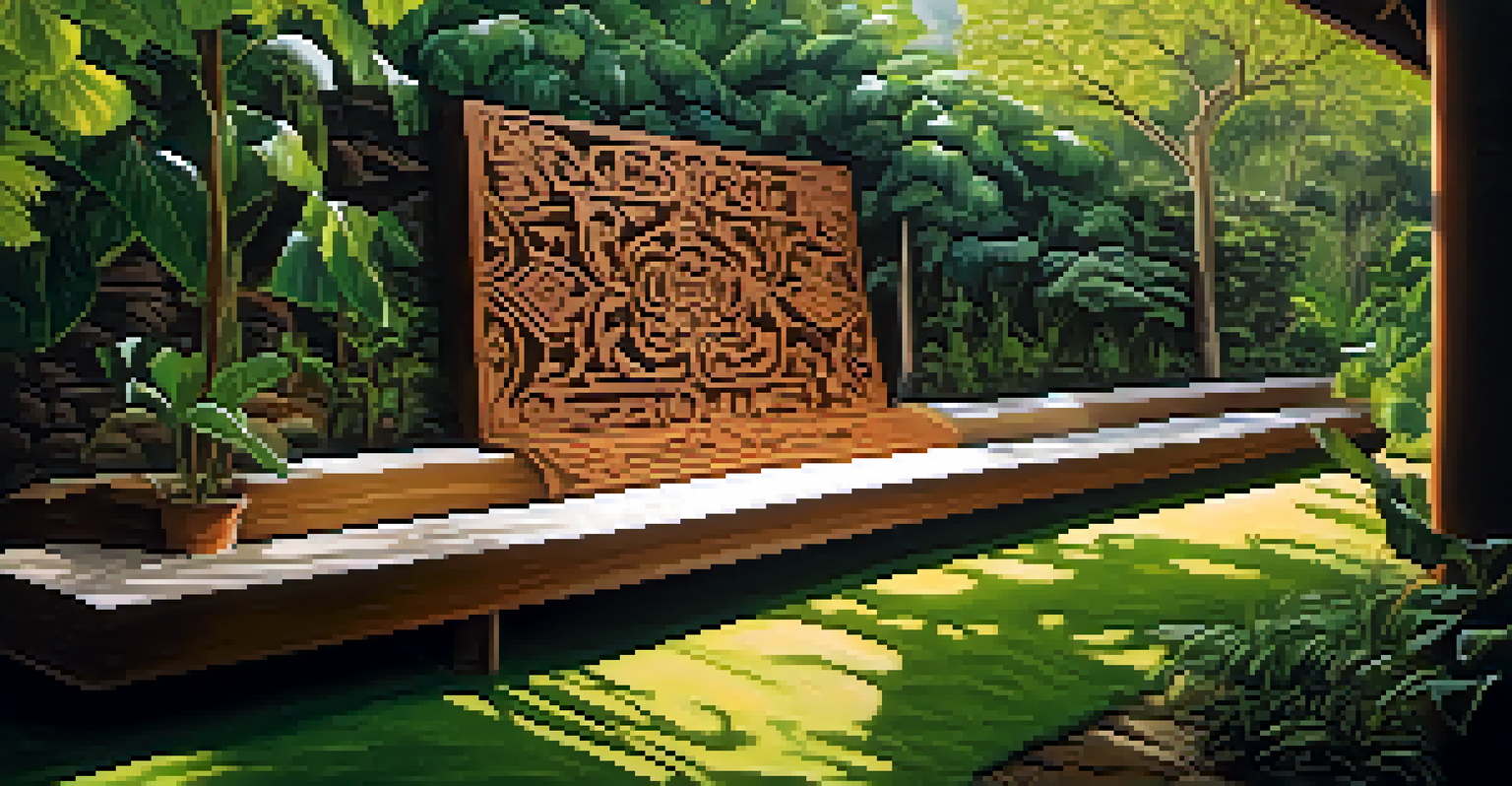Techniques for Achieving Vibrant Color in Wood Carvings

Understanding the Basics of Wood and Color
To effectively achieve vibrant colors in wood carvings, it’s essential to understand the material itself. Different types of wood have varying natural colors and grain patterns, which can greatly influence how stains and finishes appear. For instance, softer woods like pine absorb color differently compared to hardwoods like maple or cherry, which can lead to distinct results.
Wood is a material that breathes, reacts, and speaks to us in ways we often overlook.
Moreover, the wood's moisture content plays a crucial role in color application. Wet wood may not absorb stains evenly, leading to blotchy results. Thus, ensuring your wood is properly dried and prepared can set a solid foundation for achieving the color depth you desire.
Finally, familiarity with the wood's inherent properties allows you to select the right techniques and products that will enhance, rather than mask, its natural beauty. This foundational knowledge is the first step toward creating stunning, colorful carvings.
Choosing the Right Stains for Vibrancy
When it comes to enhancing the color in your wood carvings, selecting the right stain is key. Oil-based stains are often favored for their rich color and ability to penetrate deeply into the wood, bringing out the grain beautifully. Water-based stains, on the other hand, tend to dry quicker and are easier to clean up, making them a great option for beginners.

It's also important to consider the color palette you want to achieve. Transparent stains can enhance the wood's natural beauty, while solid stains can offer a bold, uniform color. Experimenting with different colors on scrap pieces of wood can help you visualize the final outcome before committing to your project.
Understanding Wood's Properties
Different types of wood absorb color differently, making it essential to know their natural characteristics for effective staining.
Lastly, consider layering stains to achieve more complex color effects. By applying multiple shades, you can create depth and dimension that truly brings your carvings to life.
The Role of Paint in Wood Carving Colors
For those looking to achieve a vibrant and opaque finish, paint can be an excellent alternative to stains. Acrylic paints, for instance, provide a wide range of vibrant colors and can be mixed to create custom shades. This flexibility allows artists to explore their creativity and achieve unique looks that stains may not offer.
Color is the keyboard, the eyes are the harmonies, the soul is the piano with many strings.
However, painting requires a different approach than staining. It's crucial to properly prepare the wood surface by sanding and priming to ensure good adhesion and a smooth finish. This preparation helps the paint to adhere better and prevents peeling or chipping over time.
Moreover, with paint, you can add additional details and designs, which can elevate your carvings from simple to extraordinary. The ability to incorporate intricate patterns and bold colors makes paint a popular choice for many wood carving enthusiasts.
Finishing Techniques for Enhanced Color
Once you've applied your color, finishing techniques can further enhance the vibrancy of your wood carvings. Applying a clear finish, such as polyurethane or varnish, can deepen the color and add a beautiful sheen that makes your project stand out. This protective layer also helps prevent wear and damage to the underlying wood.
Another technique is to use a sanding sealer before the final finish. This product can help to fill in the wood grain, creating a smoother surface and ensuring even color application. By sealing the wood first, you can also prevent stains from bleeding into unwanted areas.
Choosing Stains and Techniques
Selecting the right stains and layering techniques can enhance the vibrancy and depth of your wood carvings.
Finally, consider buffing your finish with a soft cloth or a buffing wheel. This step not only enhances the shine but also brings out the depth of color, giving your carvings a professional look that is sure to impress.
Experimenting with Natural Dyes
Natural dyes offer a unique way to achieve vibrant colors while being eco-friendly. These dyes can be derived from plants, fruits, and even insects, providing a rich range of colors that are often more subtle and complex than synthetic options. For example, walnut hulls create a deep brown, while beet juice can produce a lovely red hue.
One of the joys of using natural dyes is the experimentation process. Different wood types and dye sources can yield unexpected results, encouraging creativity and a personal touch in each piece. Plus, the satisfaction of using sustainable materials can be quite rewarding.
However, it's important to note that natural dyes may require a mordant—an agent that helps the dye adhere to the wood. Understanding this process can open up a whole new world of color possibilities for wood carving enthusiasts.
Utilizing Wood Burn Techniques for Color Depth
Wood burning, or pyrography, is another technique that can add depth and dimension to your carvings. By carefully burning the wood's surface, you can create rich, dark lines and patterns that contrast beautifully with colored stains or paints. This method not only enhances the visual interest but also adds texture to your work.
The key to successful wood burning lies in controlling the heat and pressure applied to the wood. A lighter touch can create fine, delicate lines, while increased pressure and heat will yield darker, bolder results. Practicing on scrap pieces can help you master this technique and determine the best settings for your project.
Maintaining Color Integrity
Regular maintenance and protection from sunlight are crucial for preserving the vibrant colors of your wood carvings.
Incorporating wood burning into your color scheme can create a stunning combination of light and dark, adding another layer of complexity to your carvings. The interplay of color and texture can transform a simple piece into a true work of art.
Maintaining Your Colorful Wood Carvings
Once you've achieved vibrant colors in your wood carvings, maintaining that beauty is crucial. Regular dusting and cleaning will help preserve the finish and color integrity, ensuring your work remains striking for years to come. Avoid using harsh chemicals or abrasive materials that can damage the surface.
Additionally, consider applying a fresh layer of finish every few years. This not only protects the colors but can also rejuvenate the overall appearance of your carvings. A little maintenance goes a long way in keeping your creations looking their best.

Finally, be mindful of sunlight exposure. Direct sunlight can fade colors over time, so displaying your wood carvings in a shaded area or using UV-protective coatings can help maintain their vibrancy. With the right care, your colorful wood carvings can be enjoyed for generations.